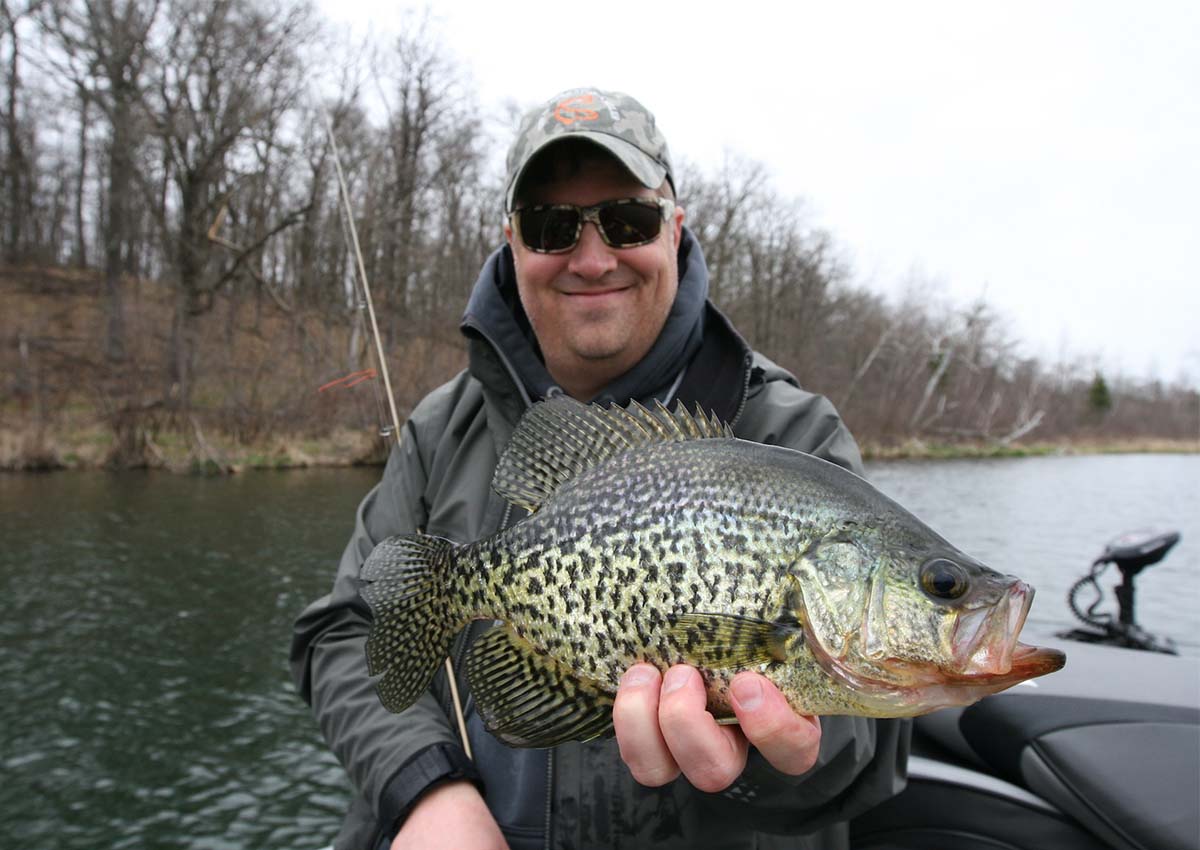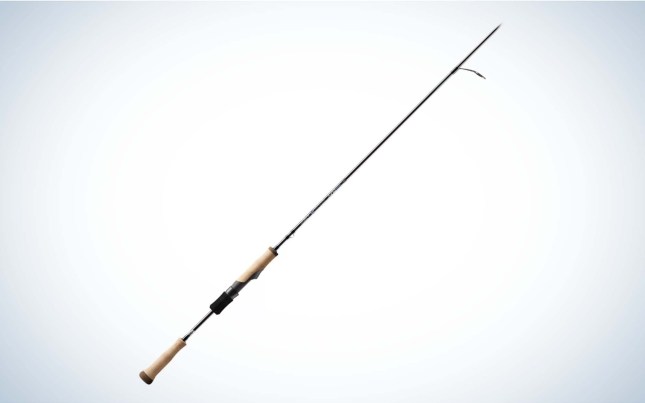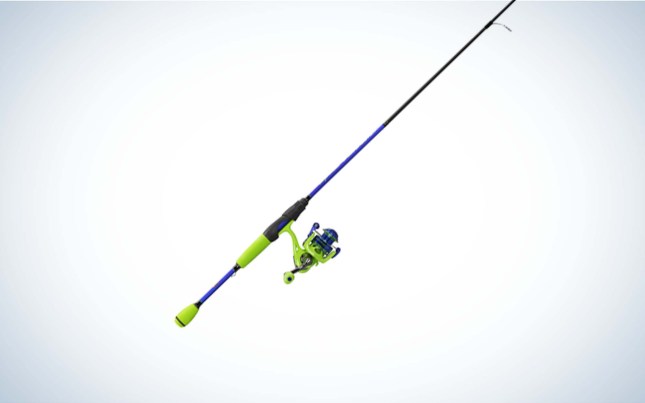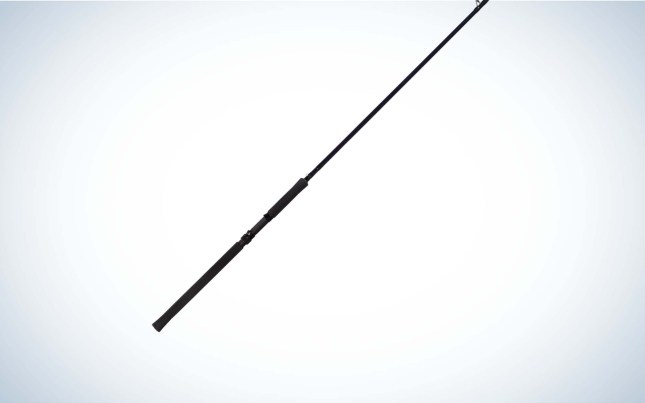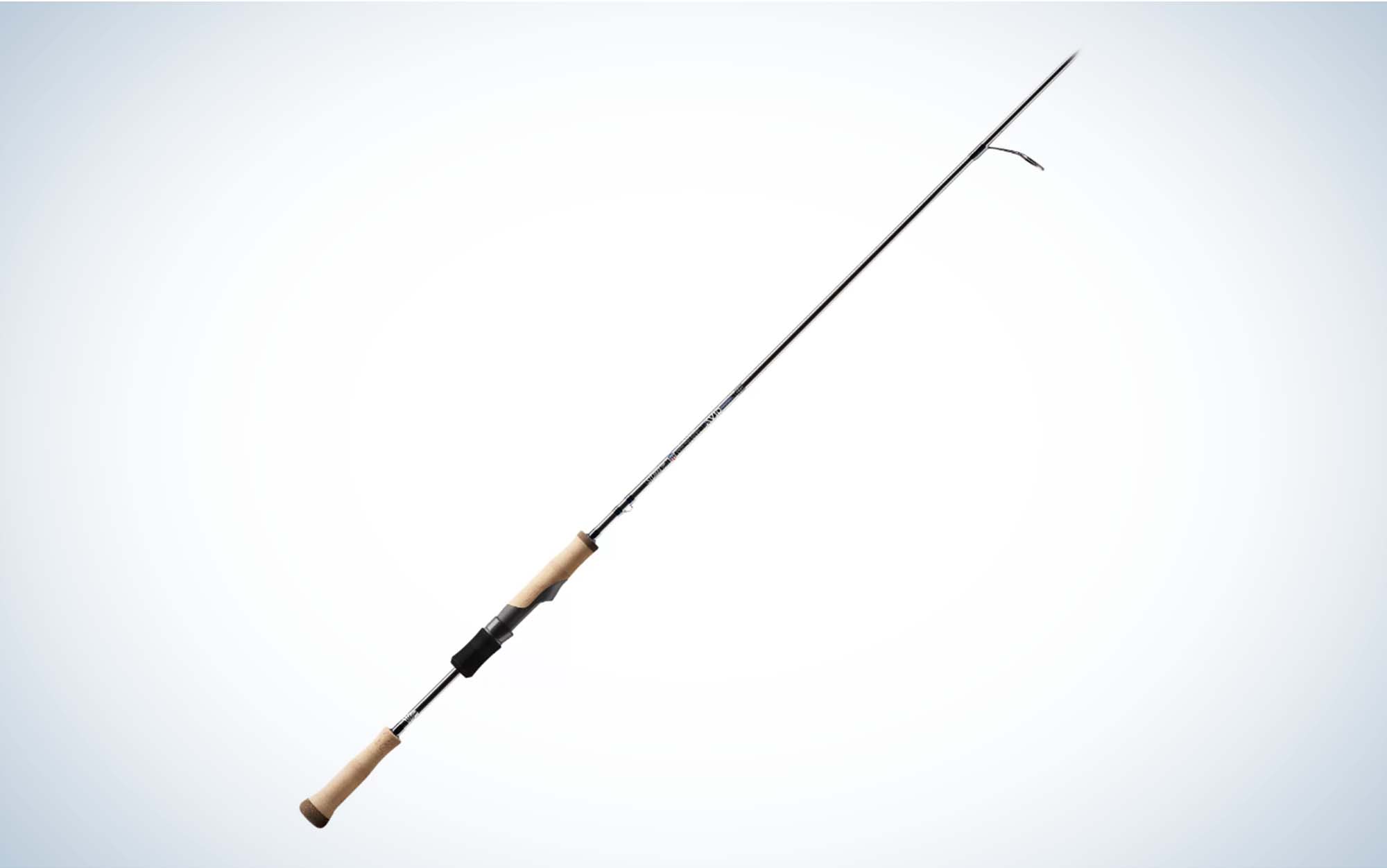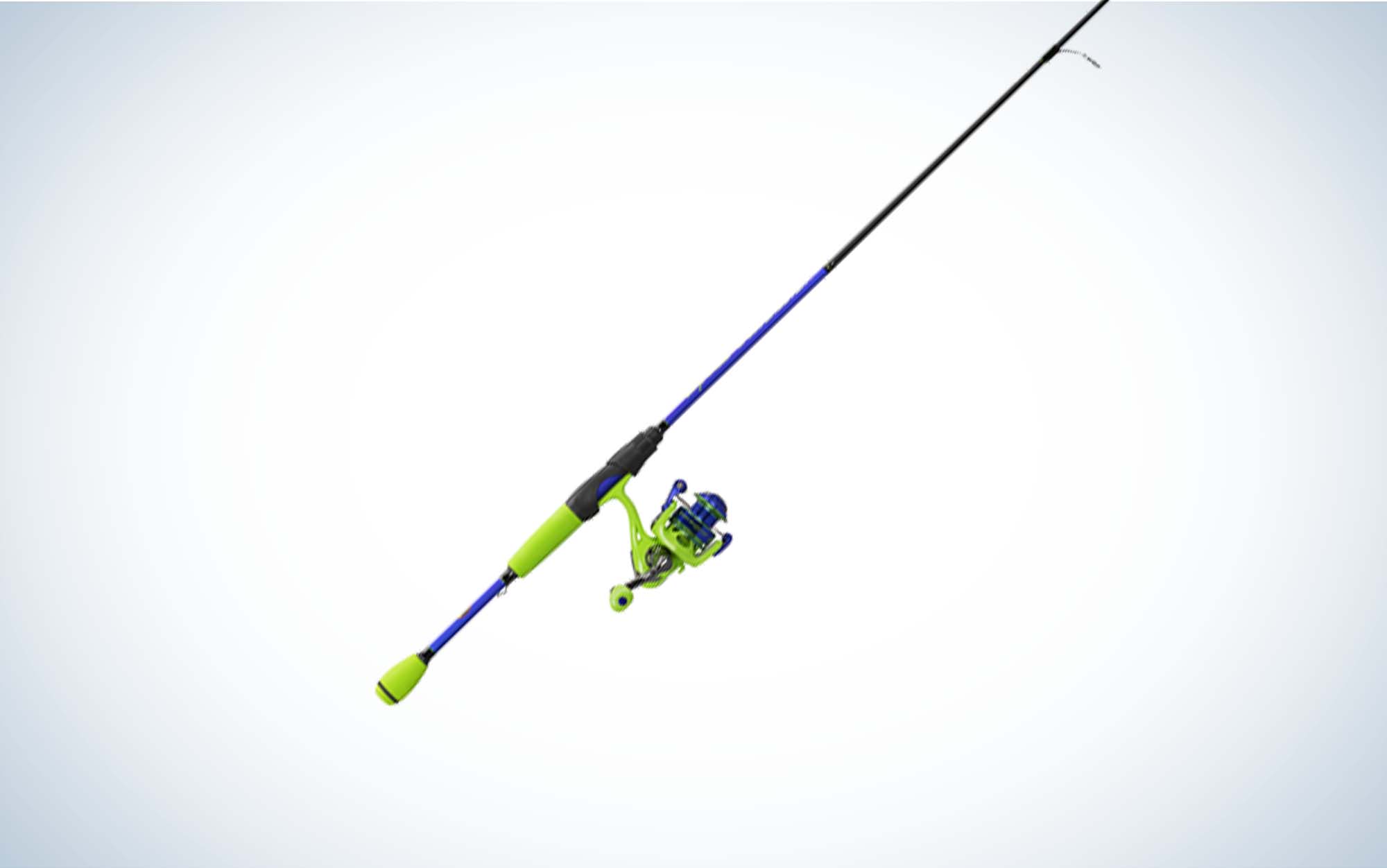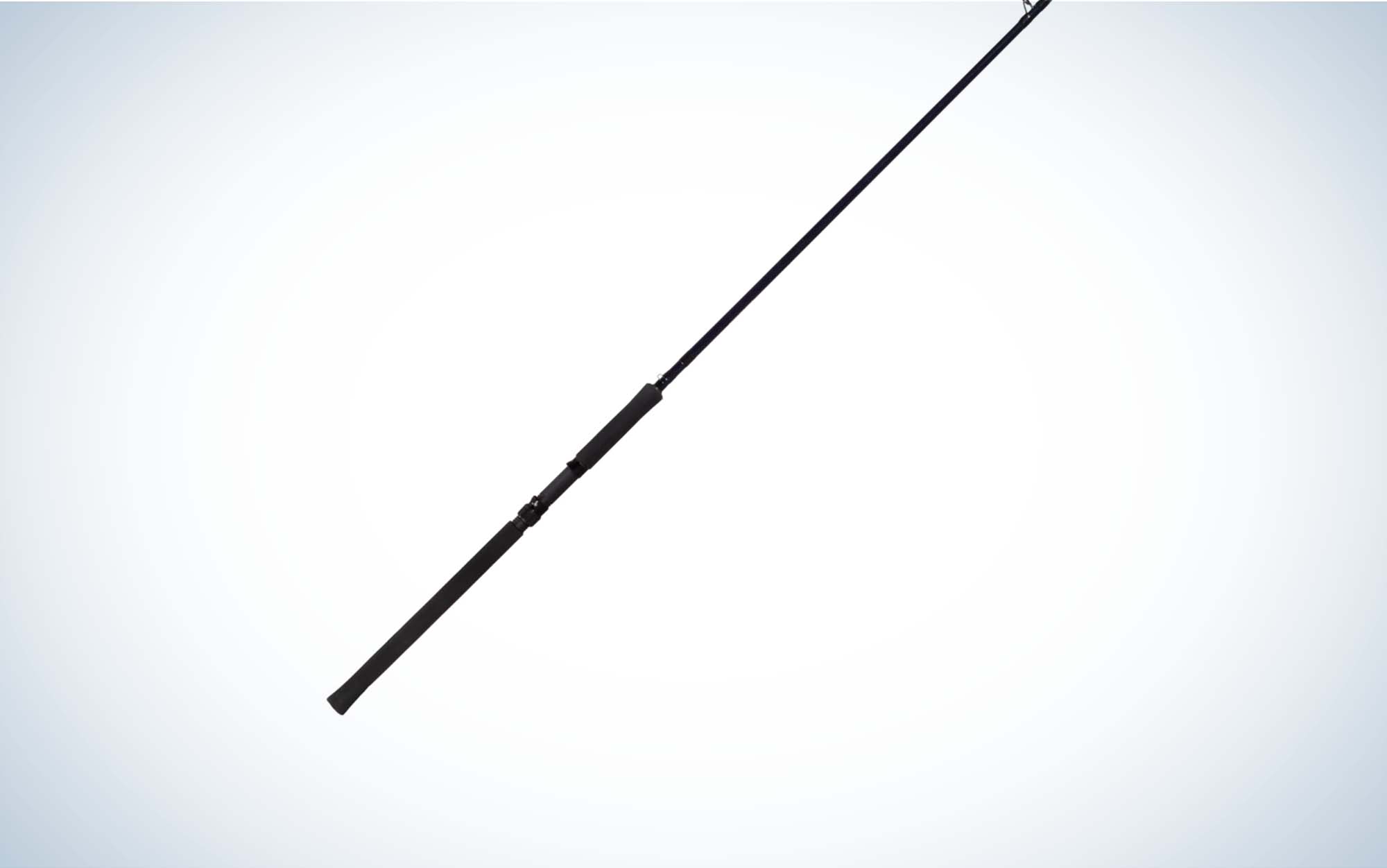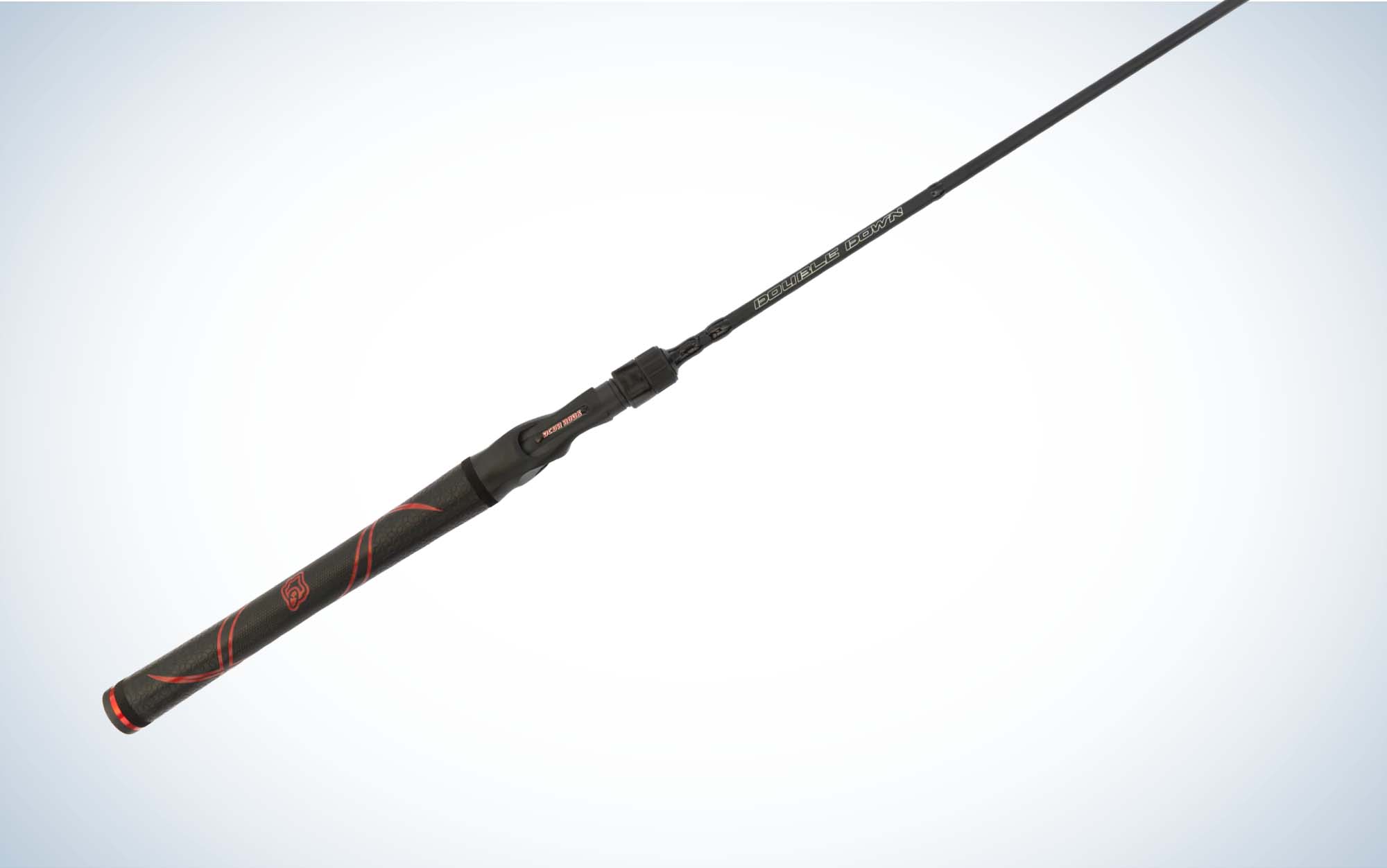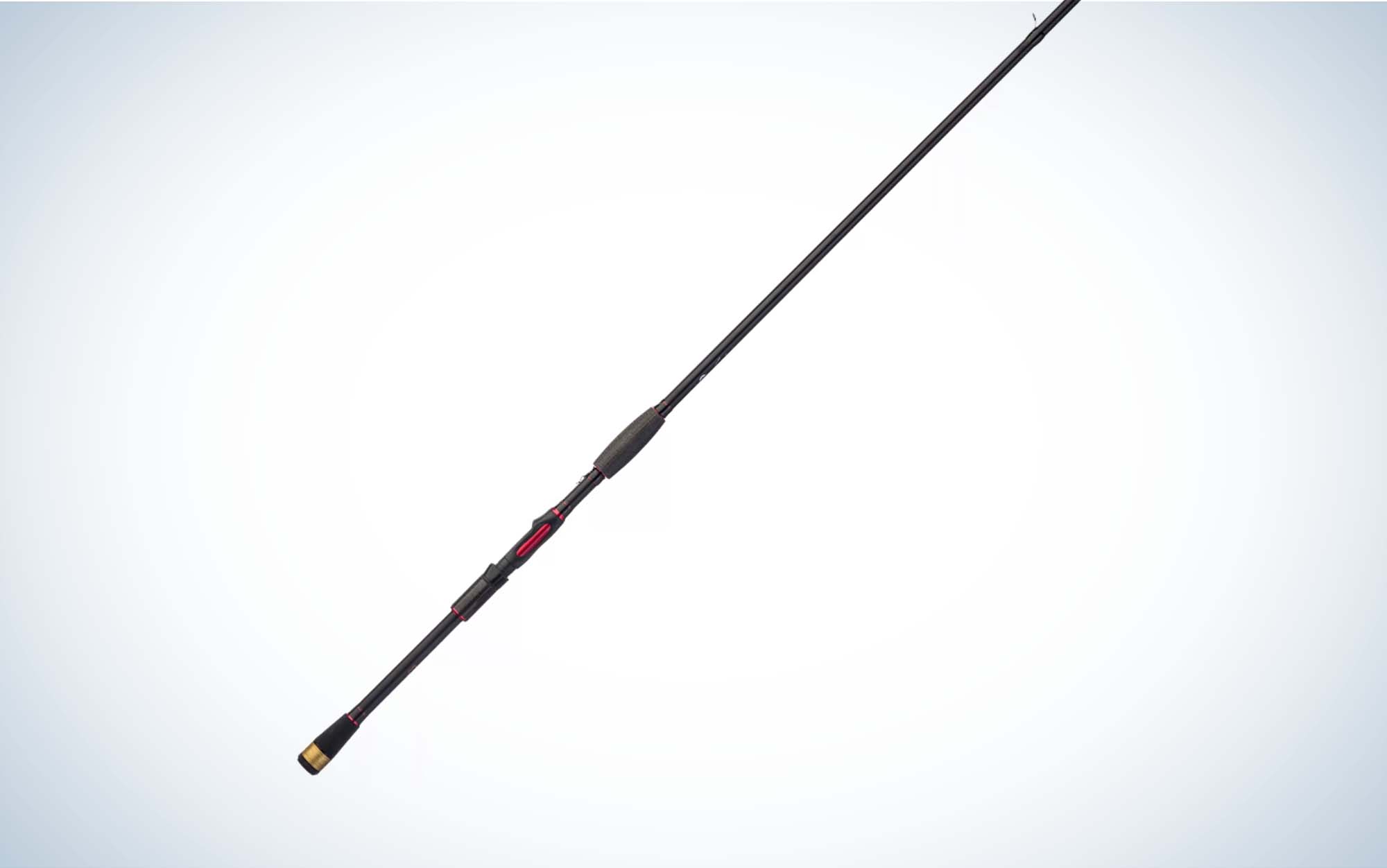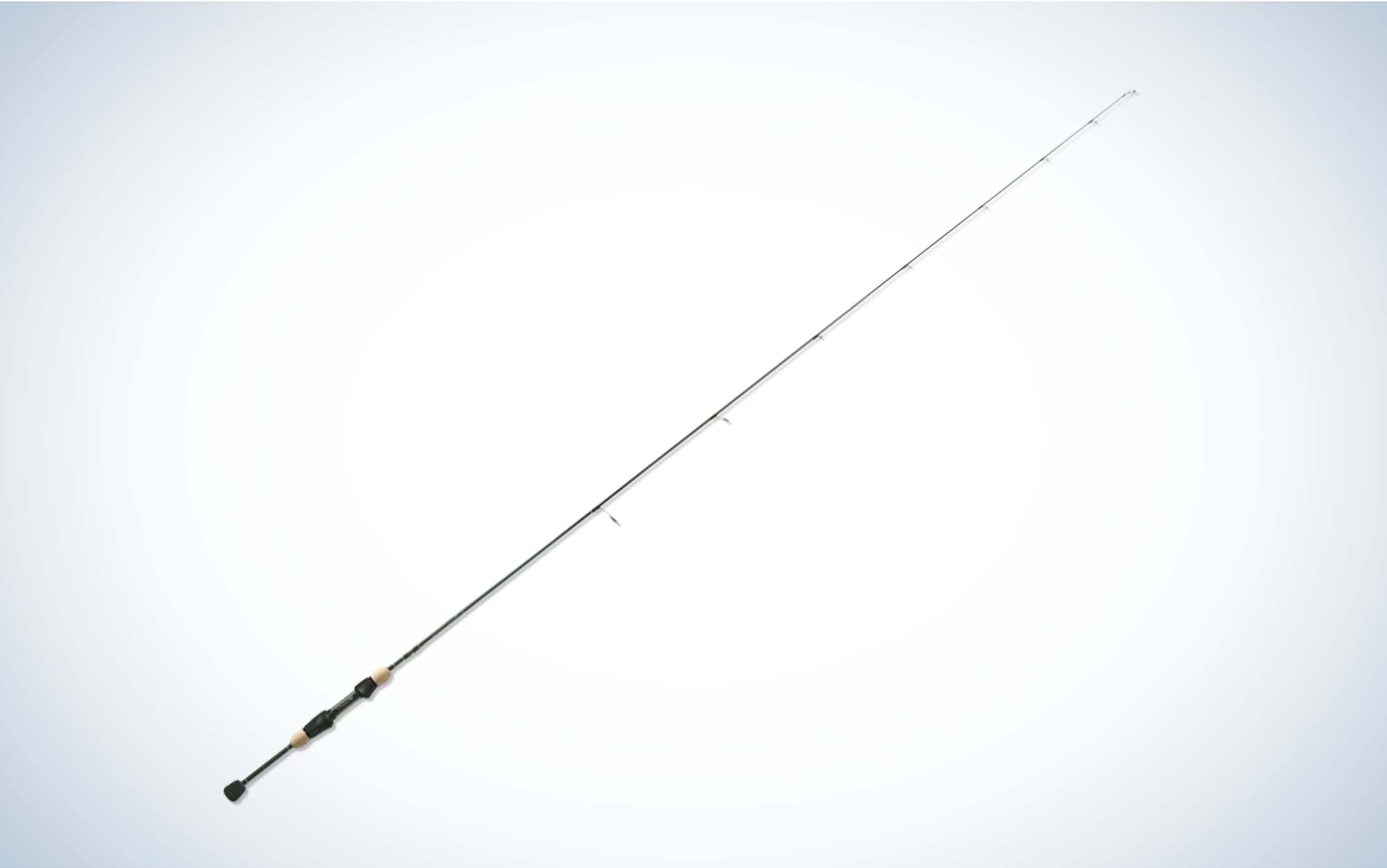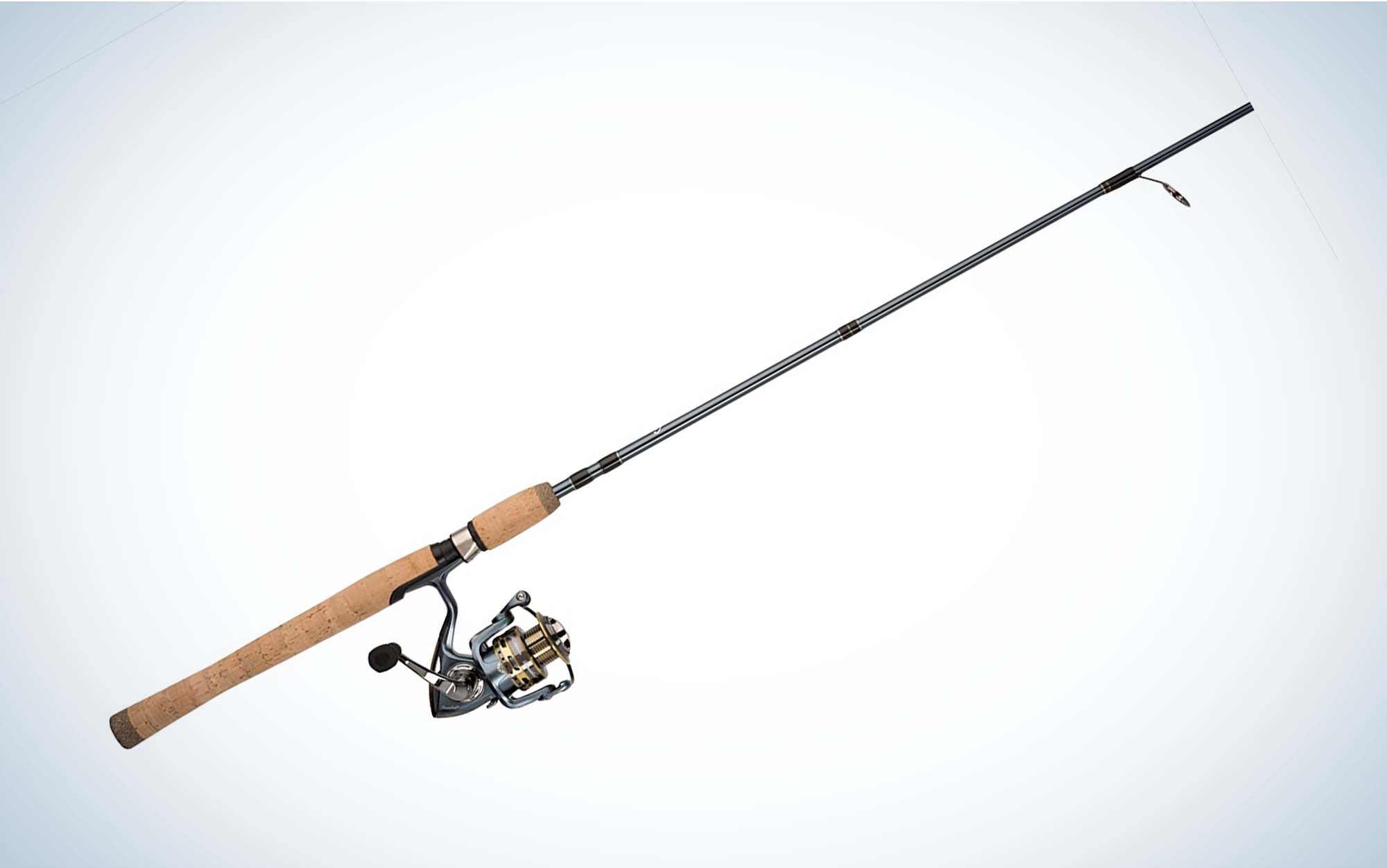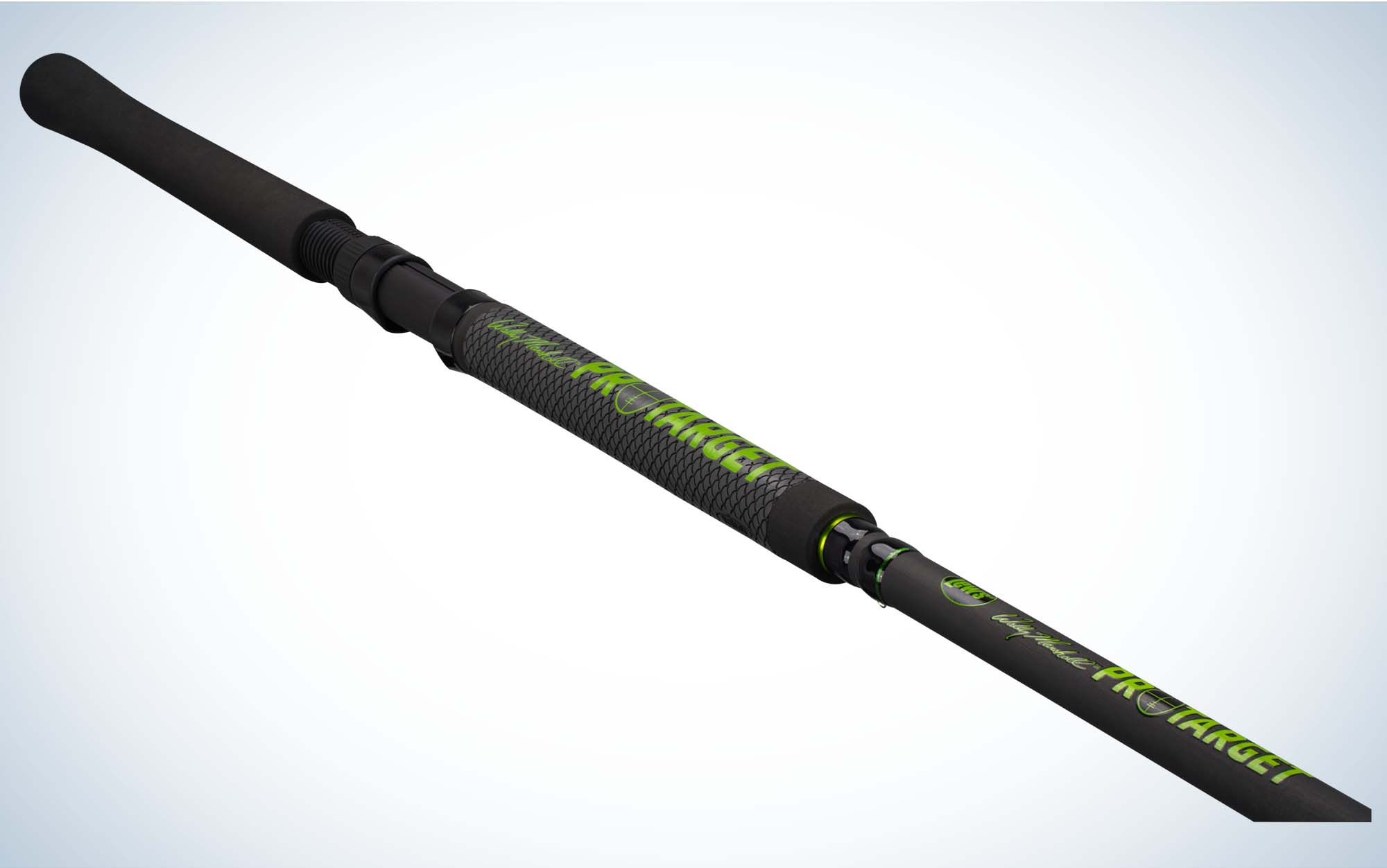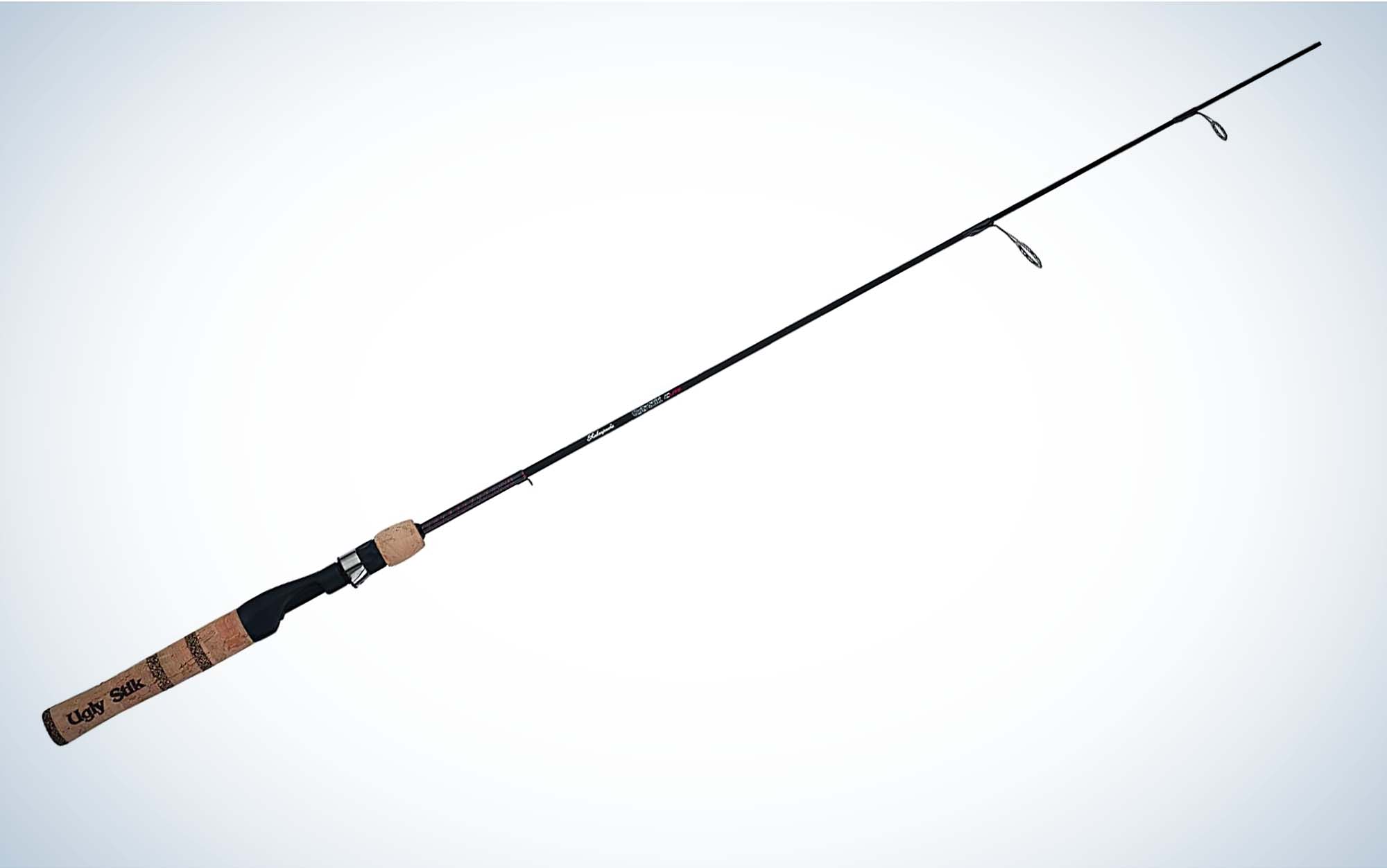We may earn revenue from the products available on this page and participate in affiliate programs. Learn More ›
These are wonderful times to be a crappie fan; we finally have quality, dedicated crappie rods and gear. Creative anglers and companies are crafting exciting new tackle, lures, and equipment, at last injecting the same level of creativity into the pursuit of crappie as their bass counterparts.
These days, I marvel at the lightweight, efficient, ultra-sensitive rods we wield. Like the new generation of crappie lures, rods designed specifically for light lures, wispy lines, and light-biting fish have reached a crescendo of awesome. Longer, smoother casts, high-precision lure delivery, and superior bite detection are all at our fingertips. Previously, given a lack of quality, technique-specific crappie rods, most of us simply settled for generic “ultralight” rods—nearly always insufficient by several octaves. Today, techniques like dock-shooting, tightlining, strolling, dipping, jig-poling, live-scoping—or just plain old casting a jig—are best met with a purpose-driven crappie rod.
To help you separate the great rods available today from the best for you, I fished the best crappie rods. Here are my top picks for the most popular crappie fishing methods and my thoughts on each.
- Best Overall: St. Croix Avid Panfish – 6 foot 9 inch
- Best for Dock Shooting: Lew’s Wally Marshall Speed Shooter
- Best Trolling Rod: B ’n’ M Pro Staff Trolling Rod
- Best Bait Finesse System: Jenko Fishing Double Down Bait Finesse System Rod
- Best Vertical Dipping / Forward Facing Sonar Rod: Jenko Fishing Big T X-13
- Best High-End: St. Croix Legend Elite Panfish
- Best Rod and Reel Combo: Pflueger President Spinning Combo
- Best Jigging Rod: Lew’s Wally Marshall Pro Target Jigging Rods
- Best Budget: Ugly Stik Elite Spinning Rod
How I Chose the Best Crappie Rods
Crappie are caught with a simple float and jig or with high-tech electronics and specialized rods. With the wide variety of techniques for crappie fishing, I made sure to include a wide selection of rods that are versatile and ones meant for a single purpose.
Best Crappie Rods: Reviews & Recommendations
Best Overall: St. Croix Avid Panfish – 6 foot 9 inch ASP69ULF
Key Features
- Length: 6 feet 9 inches
- Power: Ultralight to Medium Light
- Hybrid SCII+ carbon fiber blanks
- 15-year transferable warranty
- Split grip reel seat
Pros
- Exceptionally light in weight yet incredibly powerful and efficient, even with 2- to 4-pound test lines
- Ideal for casting and managing micro braids and other superlight lines
- Solid reel lockup
Cons
- Price
While crappie rods have historically been built with inexpensive, lower-end blanks, guides, and handles, St Croix’s Avid Panfish series blows you away with its high-end componentry and performance, matched with a digestible price tag.
One season into an Avid Panfish rod, it’s become the first stick I grab anytime I’m casting a 1/64- or 1/32-ounce crappie jig with 2- or 3-pound test line. Unlike so many other crappie rods whose relatively heavy, mismatched guides create excessive “whippiness” in the tip section, Avid Panfish rods employ feathery Seaguide Delta TYG guides and tips. To reduce arm fatigue, the rod’s split-grip handle creates optimal balance, tucking comfortably into the underside of your forearm while fishing or fighting crappies.
Read Next: Sunfish vs Bluegill Identification Guide
Through the lower three-fourths of the rod blank, you’ve got excellent torque for punching out long casts with the best crappie lures and for mitigating muscular contortions from larger panfish—as well as larger species. The tip section provides the perfect compromise between power and measured give, just enough cushion to protect light lines and thin-wire hooks while also catapulting tiny lures further than you thought possible.
Best for Dock Shooting: Lew’s Wally Marshall Speed Shooter
Key Features
- Lengths: 5 feet 6 inches, 6 feet, 6 feet 6 inches, and 7 feet
- Premium IM8 graphite blank
- American Tackle MicroWave Air stainless steel guides with ringless inserts
Pros
- Micro tip eyelet reduces line-slap
- Rod blank “touch” system provides more sensitivity for light biting fish
Cons
- Rod stiffness limits its ability to cast lightweight lures in traditional fishing scenarios
The ability to deliver a lure to the farthest, darkest corners beneath a boat dock—or way up underneath a fallen tree—often determines whether you blank or boat dozens of nice crappies. Dock shooting requires the angler to slingshot a lure on a low trajectory across the water, often skipping it under low-hanging structures. Typically, the angler pinches the jighead between thumb and index finger, hook facing out, fully loading the rod blank to create launch velocity. With eyes on your target—typically a small opening beneath a dock, pontoon, or other cover—the lure is released, propelled by the arcing rod’s energy.

Obviously, the technique takes practice. But Lew’s Speed Shooter greatly eased my learning curve. Within a few hours of on-water practice, I was skillfully launching tiny jigs back beneath the furthest, darkest recesses of fish-holding boat docks, connecting on fish after fish. It’s an invaluable method for any crappie angler, driven largely by the right dock-shooting rod.
Best Trolling Rod: B ’n’ M Pro Staff Trolling Rods
Key Features
- Lengths: 12, 14, and 16 feet
- 100-percent graphite blank
- EVA handle
Pros
- Equipped with Reinforced Hi-Vis (RVS) tip
- Dyna-Flow guides with stainless inserts that won’t pop out
- Strategically placed reel seats for fit and balance in rod holders
- Can be coupled with either a spinning or casting reel
- Perfect length-actions for pulling crankbaits or spider rigging
Cons
- Designed to be fished in rod holders; rod length and weight can be fatiguing to handhold for extended periods
While many companies offer generic or low-end panfish rods, B ’n’ M Poles continues to listen to the needs of serious crappie anglers, building fine-tuned, technique-specific crappie tools. Trolling remains a valuable crappie catching technique, and B ’n’ M Poles’ pro staff designed these rods to maximize lure spread, sensitivity, and comfort.
Pulling crankbaits, minnow rigs, or other trolling setups requires a rod soft and forgiving enough to cushion light or braided lines while preventing missed or lost fish—particularly important given the papery thin mandibles of crappies. When a crappie bites a trolled crankbait, an excessively stiff or short rod will rip hooks loose or create slack in the line leading to lost fish. Further, a longer rod gets lures away from the boat.
Varying lengths of B ’n’ M Poles’ Trolling Rods have also allowed me to stagger my trolling spread without tangling lines. Finally, these fine rods typically set the hooks themselves: The blank’s gradual-loading nature allows crappies to inhale the entire lure or bait without feeling ample resistance, while the boat’s forward momentum drives the hooks home.
Best Bait Finesse System: Jenko Fishing Double Down Bait Finesse System Rod
Key Features
- Length: 6 feet 6 inches
- Line Rating: 2- to 6-pound test
- Lure Weights: 1/80 to ⅛ ounce
Pros
- Improved casting accuracy with light line and micro-sized baits
- Excellent option for anglers who prefer casting over spinning tackle
Cons
- Requires a specific BFS reel, such as a Shimano Curado BFS, Shimano Aldebaran BFS, or Daiwa Alphas Air
On the cutting edge of crappie and panfish products, Jenko Fishing’s Double Down BFS Casting rod introduces anglers to the possibility of tossing tiny lures on casting rather than spinning tackle. BFS also all but eliminates the line twist and other issues associated with spinning tackle.
When I first fished BFS or Bait Finesse System tackle a few years ago, its ability to deliver tiny lures on casting tackle with great accuracy blew me away. A Japanese-born fishing method for casting light line and micro baits further and more accurately than comparable spinning tackle, BFS has major potential in the crappie arena.
Jenko Fishing, a leader in crappie tackle, offers its Double Down BFS rod, a 4.2-ounce casting rod—like a bass rod in miniature. While the manufacturer suggests the rod can cast 1/80- to 1/8-ounce lures, I’ve found it shines with 1/16-ounce jig and plastic combinations. I’ve also settled on 4-pound test Sufix Nanobraid for extra-long casts and unparalleled sensitivity with and precise control over light lures. Armed with a Shimano Curado BFS, the entire outfit weighs just over 10 ounces—at least several ounces lighter than the wispiest combo you’ve ever fished, a virtual quill of a casting combo.
Best Vertical Dipping / Forward Facing Sonar Rod: Jenko Fishing Big T X-13
Key Features
- Carbon fiber grip
- Integrated, interchangeable weight balance system
- ALPS guides and Recoil tip
- Lengths: 10, 13, and 15 feet
Pros
- Sensitive and powerful blank for bite detection and “boat flipping” crappies
- Adjustable weight balance system offsets tip weight for optimal sensitivity and lure control
Cons
- Rod can feel heavy with all butt weights attached
The Big T X-13 integrates some amazing, high-end features into its 13-foot length. Even if you don’t use forward-facing sonar, this rod offers exceptional advantages for “dipping” small lures into precise fish-holding spots, such as between lily pads or right up against a cypress tree.
Catering to the growing number of crappie anglers who rely on the best fish finders with forward-facing sonar, Jenko Fishing’s Big T X rods create a potent fish-catching system. I prefer the 13-foot X-13 for its ability to get a lure far enough away from the boat to avoid spooking fish, yet still giving me precise control over the lure’s action. Once you’ve determined how and where the lure appears on the sonar screen (approximately 13 feet from the transducer), you’ve already won half the battle and can focus on different jigging cadences that attract and trigger bites, as opposed to constantly searching the screen for your lure. With live sonar fishing, it’s all about repeatability and locking in a reliable pattern fast; this rod helps you do that.
I’ve outfitted the rod with a 6.5-ounce Shimano Curado 70 casting reel, loaded with 6-pound test braided line. For balance, I kept all eight 1/3-ounce counterweights attached to the butt. This is key because, generally, as rod length increases, it becomes more difficult to control a lure. The weights help offset tip weight, reduce “slop” and thereby produce a more precise presentation. Moreover, the rod’s high modulus graphite blank, with a fast, sensitive tip, adds to the precision. (Last thing you want is a tip that continues wagging and vibrating long after your previous jigging stroke.)
Other excellent rod features include its minimalist carbon fiber grip and extra light carbon fiber nut on the reel seat. The rod is easily powerful enough to hoist larger crappies over the gunwales, so long as you’re spooled with at least 6-pound test. Essentially, this rod will take your vertical live sonar game to a whole other level of awesome.
Best High-End: St. Croix Legend Elite Panfish
Key Features
- Lengths: 5 foot 6 inch to 7 foot
- Fuji SK2 split reel seat
- High-modulus/high-strain SCV carbon with FRS and carbon-matte scrim
- Made in the U.S.A.
Pros
- Sensitive
- Light
- Powerful
Cons
- Price
I’ve fished a St. Croix Legend Elite Panfish 6 foot 9 inch LEP69LF for three seasons, reserving it for casting little 1/32- to 1/80-ounce hair jigs with 2-pound test line. You simply won’t find a more sensitive, light, comfortable, and yet surprisingly powerful spinning rod. It will absolutely increase your catch rates.
If you’re truly serious about casting the tiniest, lightest hair jigs and microplastics on 2-, 3- and 4-pound test line in extreme finesse situations, this rod will provide endless hours of delightful fishing. Unmatched sensitivity combined with incredible balance and minimal heft makes this rod the finest ever created for the crappie, panfish, or trout enthusiast. Not surprisingly, it will likely set you back two or three c-notes, but think of it as a lifetime investment.
Best Rod and Reel Combo: Pflueger President Spinning Combo
Key Features
Rod:
- Lightweight IM8 graphite blank (1 or 2 pieces, depending on model)
- Stainless steel guides – corrosion resistant
- Cork handle with full grip
- Rods from 4 foot 8 inches (UL) to 7 feet (Med)
- Lure weight ratings start at 1/32-ounce
Reel:
- Pflueger President in 20, 25, 30 or 40 sizes
- Line ratings from 4- to 14-pound test
- 5.2:1 gear ratio
- Sealed front-side drag system
- Aluminum spool
Pros
- Proven quality reel that’s been in the Pflueger line for many years
- Eight total combo models from which to choose— four ultra-light and light power combos applicable to crappie / panfish
- Priced below $100 MSRP
Cons
- Pflueger’s tiny 20 and 25 size reels feature small spools that may create line twist issues.
- Rods not built for micro-light lines (<4-lb test) and lures (< 1/32-oz)
Across seasons, Pflueger’s President reels have proven to be smooth, consistent operators, offering many years of reliable service. (I have one Pflueger President that’s remained in my trout /panfish arsenal for nearly twenty years.) The IM8 graphite rods are equally impressive for the money, featuring soft yet sensitive tips and just enough flex through the lower half of the blank to battle crappies of any size without being overpowering.
Among a haystack of bargain basement grade spinning combos—some priced well into the $100 to $200 range—Pflueger’s President combos provide quality, consistent casting for years. This is a combo you can lend to a less experienced fishing partner or a young angler and feel good about it. It’s also a nice choice for a hike through the woods on a quick trip to your local creek or pond.
Best Jigging Rod: Lew’s Wally Marshall Pro Target Jigging Rods
Key Features
- Premium IM8 graphite blank
- Stainless steel guide frames with aluminum oxide inserts
- Rear set graphite reel seat with black metal hooks
- Winn Dri-Tac grips with EVA butts
- Offered in 10-, 12-, 14- and 16-foot length models
Pros
- Ample backbone to hoist large crappies into the boat
- Comfortable Winn Dri-Tac grips
- Extended butt fits comfortably under forearm
- Relatively sensitive tip for detecting subtle inhale-style bites
- No tangle tips
Cons
- Not designed for traditional cast and retrieve fishing.
- Much heavier (weight) than a standard 5- to 7-foot crappie rod.
Every Wally Marshall designed rod I’ve fished—including those from several different brands—has performed exactly as advertised. The Lew’s Wally Marshall Pro Target Jigging Rods fish comfortably and precisely, just light enough in your hands to avert fatigue (though anglers may also choose to deploy these longer rods in a rod holder.) Although I’ve long paired longer jigging rods with a 1000-size spinning reel, this model fishes equally well with a small baitcaster, such as a 5-ounce KastKing Zephyr Bait Finesse casting reel.
Relative to crappies, the term “jigging rod” refers to a longer (at least 9-foot) two or three-piece pole capable of clutching a spinning or small baitcasting reel. The primary purpose for this longer rod is to reach out and drop a jig into the fish zone, using the rod’s length to separate yourself from crappies and avoid spooking. Lew’s Pro Target Jigging rods also match live sonar situations in which you’re pursuing specific fish in front of the boat. For this application, consider one of the longer 14- or 16-foot models.
Separately, for delivering a bait into small openings or high-percentage spots near brush, vegetation or other cover, try the 10- or 12-footer. In each case, the extra length presents and hovers a lure or livebait at a set depth and position– close to or away from cover— without spooking fish. When you detect a bite, lift the rodtip to set the hook, sweeping an arc into the blank. So long as you’re outfitted with at least 6-pound braided line, the rod’s backbone plenty stout to lift and swing even larger crappies into the boat.
Best Budget: Ugly Stik Elite Spinning Rod
Key Features
- Ugly Tech graphite composite blank
- Exposed blank reel seat
- Ugly Tuff 1-piece stainless steel guides
- Premium cork grip
- Clear fiberglass tip for extra strength
Pros
- Solid reel seat and comfortable, sensitive grips
- 1-piece guides eliminate insert pop-outs
- Graphite-glass composite offers a nice compromise between blank sensitivity and durability
Cons
- Tip section lacks the precision of solid graphite for casting and fine-tuned lure retrieves.
If your goal is to find a rod that will cast, perform and withstand a bit of maltreatment, Ugly Stik’s Elites are great little panfish sticks. Reasonably light in weight, Elite rods offer a fine combination of power and sensitivity, with comfortable cork grips and cushioned stainless-steel hoods. This isn’t necessarily premium crappie rod, but its consistent performance might convince you its value far exceeds its price tag.
An excellent option for an entry level or young angler—or as a backup rod for impromptu excursions to the local crappie pond— Ugly Stik’s Elite Spinning Rods prove that performance isn’t solely a function of price. While these aren’t the most precise or sensitive rods available, they do perform better than a few rods I’ve fished that cost twice as much.
Available in twelve spinning rod models, five of them fit crappie applications. A 5-, 6-1/2- and 7-foot ultralight are each rated for 2- to 6-pound test line and lure weights down to 1/32-ounce. My favorite in the line is a 7-foot medium light power (USEP701ML), a sweet stick for slip-float fishing.
How to Choose a Crappie Rod
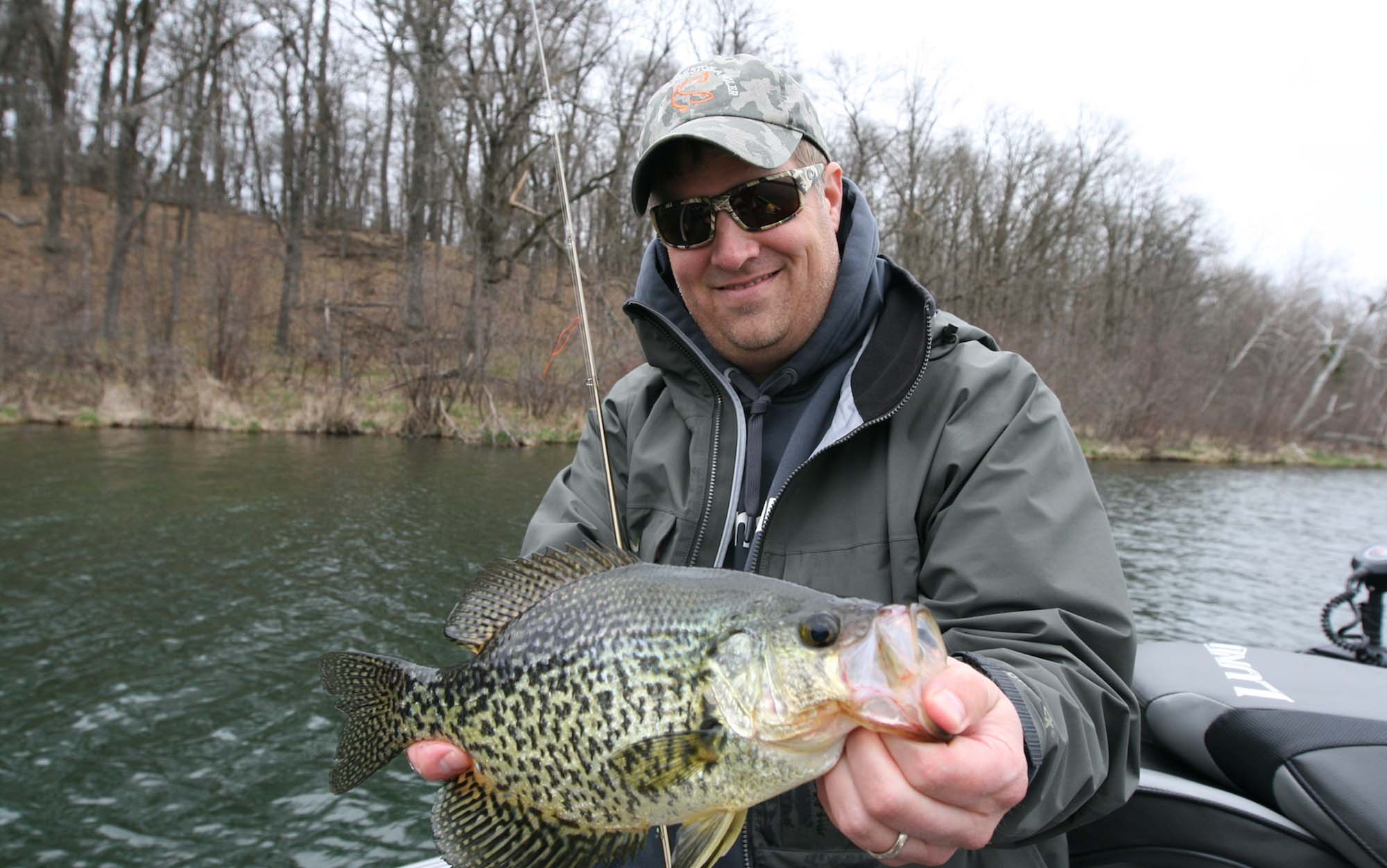
The best crappie rods are technique specific and the best way to choose a rod is to first decide on how you’ll fish for crappie, which is generally dictated by the time of year.
In spring crappie move shallow and into predictable patterns. It’s the best time to throw a jig or fish a bobber. In summer, fish tend to spread out in deeper water as they chase schools of baitfish. That’s when trolling and spider rigging become the go-to techniques for crappie anglers. Dock shooting is also an excellent technique in the summer. Fall is one of the best times to catch slabs, and anglers catch them with a variety of techniques. Of course, some people will be diehard jig anglers, and others will fish a slip float all year round.
If you’re still not sure which crappie rod is best, the ultimate beginner crappie rod is a 7-foot rod with a light power and moderate fast action. With that rod’s versatility, you can cast light jigs, fish bobbers, and even shoot docks. You’ll be able to fish it for all open water seasons.
FAQs
For most anglers, a 6 foot 6 inch to 7 foot spinning rod with a light to ultralight power hits a lot of sweet spots. Forced to choose just one rod to match a variety of presentations, including casting small jigs or spinners, pitching a slip float rig, or even vertical jigging, I’d settle on a 7-footer. A quality 7-foot rod casts small baits far, picks up slack line quickly, and usually provides enough ‘give’ or cushion in the tip section to set hooks without ripping loose. As you advance into other techniques, such as trolling crankbaits, spider rigging with minnow rigs, or live sonar fishing, longer 9- to 12-foot rods can really elevate your catch rate. None of which touches the frozen water arena, where little 2- and 3-foot rods become standard equipment—should you find yourself staring through a hold in the ice.
Of course, this all depends on the size and type of lure or bait you’re fishing—and what crappies are eating (shad versus micro-invertebrates, for example)— as well as the size of available fish. A #4 or #6 jig hook matches most soft plastics, hook size generally increases in correspondence with jig head weight. It’s not uncommon to find jigheads with #10 hooks or #2s on the other end of the spectrum. Ice anglers occasionally go even smaller, with jigheads sporting #12 or #14 hooks. For live minnows, anglers typically employ a #1 to #8 Aberdeen style hook, again, depending on bait size. (Remember, too, crappies possess relatively large mouths, allowing for larger hook sizes than their tiny-mouthed sunfish cousins.)
Much of the appeal of pursuing crappies relates to their versatile, often unpredictable natures. In early spring, once water has warmed into the low 50s, you’ll often find fish as shallow as a foot of water, especially around brush, docks, and vegetation. During the spawning season, crappies usually build nests anywhere from 1 to 3 feet of water, occasionally deeper, given a lack of shallow habitat or greater water clarity, as well as predators, such as birds and, sometimes, anglers. In summer, crappies often suspend 2 to 15 feet off bottom, often hovering around brush piles, weedlines, or beneath deep boat docks. After fall turnover, crappies may move even deeper, typically suspending 10 to 30 feet down over water as deep as 50 feet.
Why Trust Outdoor Life?
Since 1898, OL has been a leading authority in testing and reviewing hunting gear, fishing tackle, guns and shooting equipment, and much more. We have more than a century-long history of evaluating products, and we’re now bringing that expertise to online reviews. Our editors are experienced outdoorsmen and women, and most importantly, we’re trained journalists. We prioritize field testing and objective data when reviewing products. We conduct interviews with gear manufacturers and engineers as well as outdoor experts so that our readers have an understanding of how and why a product works—or doesn’t.
Advertising does not influence our gear reviews and it never will. While we always focus our coverage on standout products—because we want our readers to be aware of the latest and greatest gear—we also cover the flaws and quirks of any given product.
Final Thoughts
While enjoying the sport of crappie fishing isn’t exclusively a function of the dollars you spend on a quality rod and reel, you quickly realize how much more effectively you can present a given lure— and how many more bites you can detect—with the best crappie rods. Consider your favorite way to catch crappies and then invest in the best rod you can afford, whether it’s $100 or $300.
Perhaps for the first time ever, fishing rod manufacturers are building brilliant crappie and panfish-centric rods equal in quality and performance to high-end bass and trout rods. Moreover, we’re seeing more technique and tournament-driven designs that encourage our expansion into new ways of catching fish. That’s exciting. And ultimately, it’s the best way to learn more and catch more and bigger crappies than you ever thought possible.
